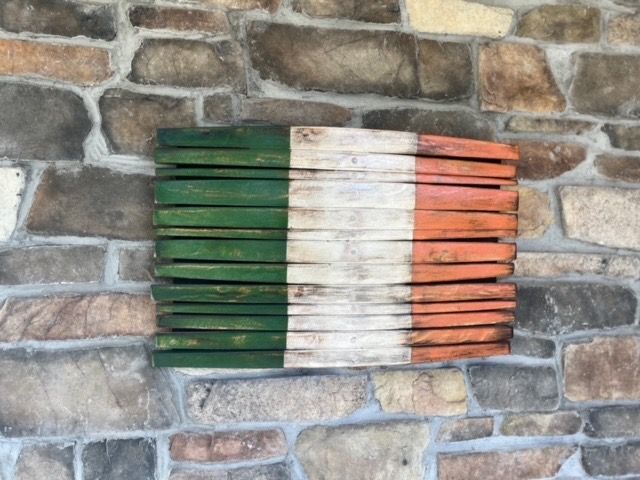Augustus Saint-Gaudens was born in Dublin during the Famine to an Irish mother and French father.
By Geoffrey Cobb
Why do we Irish celebrate our writers, but often forget our painters and sculptors? One who certainly deserves a lot more attention is the Dublin-born Augustus Saint-Gaudens, considered the father of the American Renaissance. He is one of the greatest American sculptors, and one who also pioneered the integration of sculpture with architecture and landscape. His monumental sculptures still grace major parks in Boston, New York and Chicago and he is also one of only two American artists who was honored with a national historic site. However, few today know the artist’s amazing rise from poverty to become one America’s greatest sculptors.
Saint-Gaudens was born in 1848 during the Famine to an Irish mother and a French father who was a shoemaker. The family with the six month-old Gus, as he was known, left for New York where the father struggled to run a shoe store. Saint Gaudens grew up in the Bowery, attending Sunday school at Saint Patrick’s Cathedral on Mulberry Street. The French-Irish boy survived numerous fights with rock throwing nativist street gangs who targeted him and other Celtic immigrants.
At age 13 Gus, having to choose a profession, was apprenticed to an accomplished French cameo maker. The boy spent 10-hour days polishing the stone cameos, which were very much in demand as lady’s scarf pins at the time. Soon, his boss, seeing his talent, allowed him to create his own cameos.
The art of cutting cameos was more closely related to sculpting than engraving and Saint-Gaudens labored at a workbench with many cutting tools and during his three-year apprenticeship he mastered the art of making remarkably detailed, exquisite cameos that surpassed what many journeymen adults could produce.
The downside to this apprenticeship was the French master’s brutal and abusive ways. When he fired the boy for a minor infraction and then offered him his job back at a higher wage, the boy refused. He found employment with another cameo maker who encouraged him become a sculptor. So, Saint-Gaudens began to take evening drawing classes at Cooper Union and then at the National Academy of Design.
His years of apprenticeship occurred during the Civil War and two indelible memories were etched in his brain during this period when he saw General Grant and later President Lincoln in the streets of New York. He would later draw on these memories when creating sculptures of those two men.
“Standing Lincoln,” AKA “Abraham Lincoln:
The Man,” is in Lincoln Park, Chicago.
With his apprenticeship complete by 1867, the 19-year-old Saint-Gaudens made his way to Paris where he enrolled at the Ecole des Beaux-Arts and began mastering the art of sculpting the human form.
Back in New York, he had his first major success when he received a commission in 1876 for the bronze David Farragut Memorial for Madison Square. Stanford White, a friend destined for fame as an architect and murder victim, designed its pedestal, and its 1881 unveiling to rave reviews immediately established Saint-Gaudens's reputation.
Saint-Gaudens continued to work relentlessly. In 1887 he completed one of the iconic sculptures in Chicago, the 12-foot foot high bronze “Abraham Lincoln: The Man,” which still graces the city’s Lincoln Park. For 12 years, he labored on what many consider his masterwork, The “Robert Gould Shaw Memorial” for the Boston Common, which shows African-American foot soldiers of the 54th Massachusetts Volunteer Infantry with their commander Colonel Shaw on horseback with the angel of glory hovering above them.
Dublin’s Parnell Monument was Saint-Gaudens’s only
Irish commission and one that was close to his heart.
In 1892, Saint-Gaudens began his most famous New York commission, which he would labor over for 11 years – the equestrian statue of General Sherman, which is located in Grand Army Plaza, just across from the Plaza Hotel.
In 1900 the artist moved with his wife Augusta to an artist colony in Cornish, N.H. and his home there would later become a national historic site. While in Cornish he began work on his only Irish commission: the Parnell Monument in Dublin’s O’Connell Street. Saint-Gaudens not only made a scale replica of the buildings and the square, but he even created a full-scale model of the monument in wood near his studio. However, in 1904 there was a disastrous fire in the studio and only Parnell’s head survived. Saint Gaudens commented, “More than all the rest of my losses in the fire I regret, as an Irishman, the loss of the Parnell statue.”
An Augustus Saint-Gaudens commemorative
stamp was issued in 1940.
Saint-Gaudens created his Parnell statue from photographs, cartoons and accounts of his habits and even his clothes. The artist felt that the entire monument should be “as simple, impressive and austere as possible” and the sculpture remains to this day one of Dublin’s most impressive monuments.
Saint Gaudens was asked by President Theodore Roosevelt, a fan of his work, to design an American coin and so he designed the $20 "double eagle" gold piece, for the U.S. Mint in 1907, which is considered one of the most beautiful American coins ever issued. By 1907 though Saint Gaudens was dying of cancer, and he died that year at his home in Cornish. His many monuments are an enduring legacy of this massively talented, but under appreciated Irishman.
Geoffrey Cobb, the author of the book “The King of Greenpoint” about the Brooklyn politician Pete McGuinness, will speak on the subject of the Irish of Williamsburg on Saturday afternoon, May 6, at 2 p.m., at the New York Irish History Roundtable, the Basilica of Old St. Patrick’s Cathedral, corner of Mott and Prince Streets, in Manhattan.













